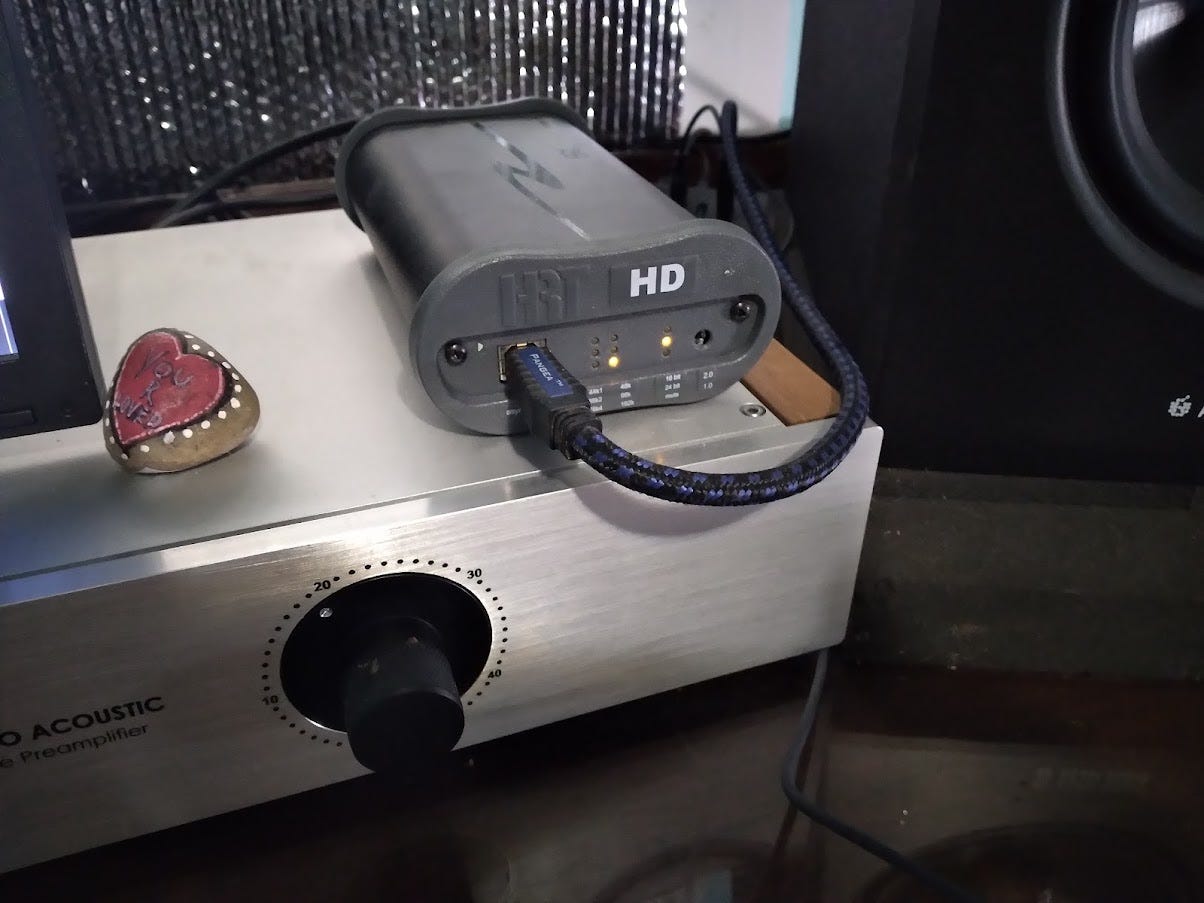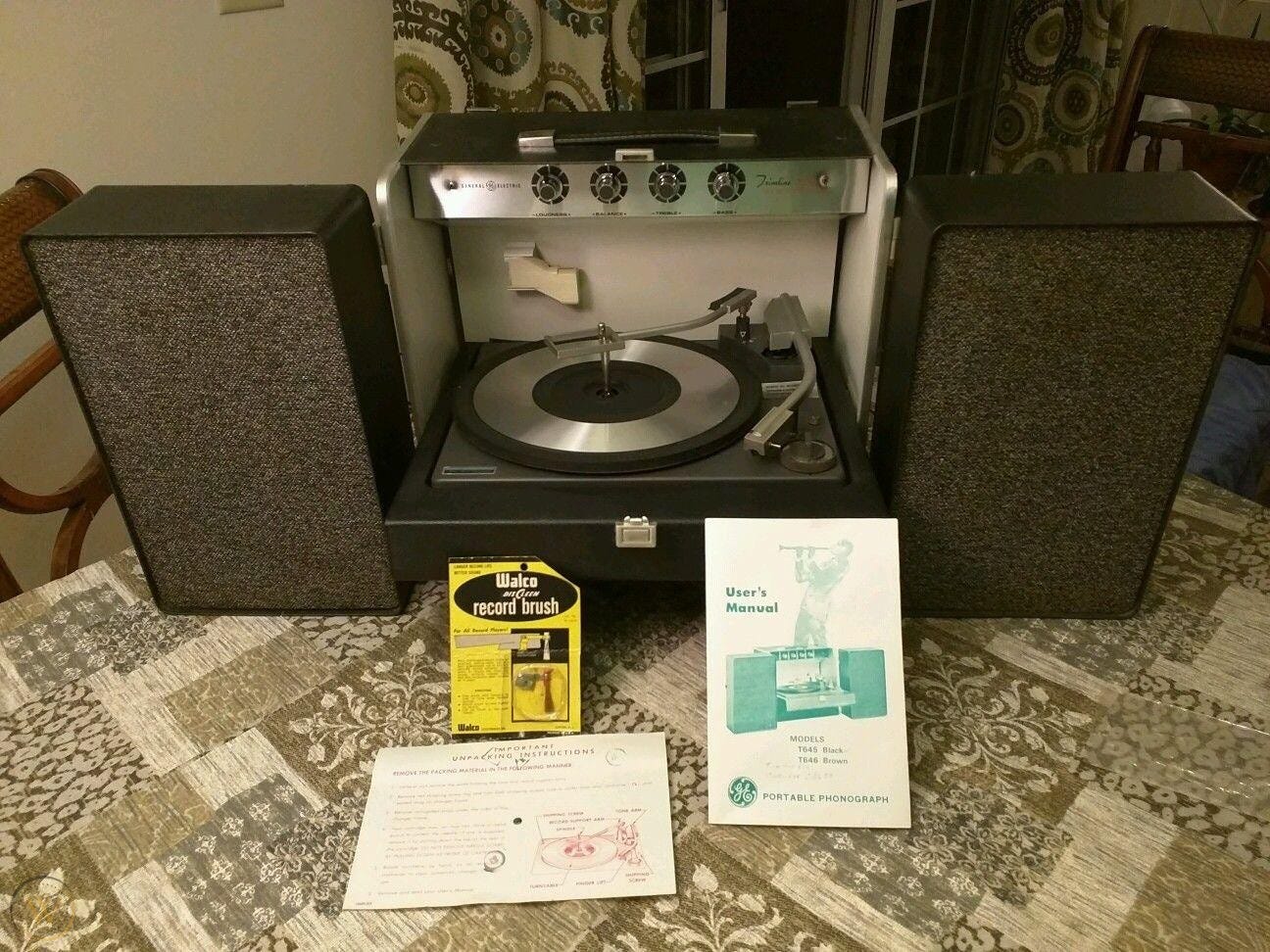How To Turn Your Windows Based Computer Into a High Fidelity Listening Experience
It Doesn't Have To be Prohibitively Expensive, But It Costs, So Be Prepared To Spend Something
I mentioned before that I was a child in the ’60s, born in the “Space Age”.
Once I was out of the womb, it wasn’t long before the technological marvel of the time, a portable radio, small, relatively cheap, handheld, convenient, powered by transistors, could keep you up with the latest events happening in the world between thirty-minute bursts of the musical hits of the day.
Most popular music of that time was actually written to fit into a three-minute maximum to make it programmable on the dominant format of the time, AM Radio. It was, at the top of every hour, News, followed by The “Hits”, Ads, and News at the bottom of the hour, then repeating it all again as the minute hand swept back up to the top of the hour. Imagine creating art, and automatically limiting yourself to fit into a programmed slot. I think of someone like Carole King and Gerry Goffin timing their latest creative effort with a stopwatch in the Brill Building.
It was Japanese technology that was allowing people to take the world with them anywhere. As I recall “Made In Japan” became, undeservedly, a mark of cheapness, synonymous with low quality, and built to fall apart. It was likely this was a sort of holdover from 20 years prior when Japan was an official enemy of the US in World War Two but that’s just me speculating.
The first music I heard, from the Beatles, to Jimi Hendrix, revolutionary and consciousness changing, was, unfortunately, reduced to a tinny, monophonic rasp, due to the transistor radios’ lo-fi, mass-manufactured speakers, complete lack of tone controls, and the fact that it was carried over the air. There was a LOT of noise on the AM carrier wave. FM became dominant a few years later, in large part because the carrier wave signal wasn’t as noisy. The fidelity was also markedly improved. I was soon to be able to remedy this a few years later when my parents graciously afforded me a portable record player with detachable stereo speakers. What a revelation to have adjustable Treble, Bass, and Volume and FINALLY hear Paul McCartney’s Bass on songs like “Rain” and “Come Together”. Music had dimension. This is, in fact, the exact model I had:
As the years went by I was never able to afford the sound system I wanted, but I had a fairly decent one in the mid-90s, that, while not considered “High End” was pleasing to the ear, featured a subwoofer, and filled the room with clarity without high volume. I spent more money than I should have to build a collection of my favorite music from the new crystal clear, enhanced sound medium of CD playback. To people who grew up with a transistor radio humming and hissing in their ear, it was like final Nirvana. Or so we thought. Everything changes.
Unfortunately, every single bit of music on CD, as well as the stereo and a (new at the time) Gateway computer burned up in a house fire, large gobs of melted plastic amid charred ruins. It was one of the most absolutely depressing moments of my life. I determined, at that time, that I had wasted WAY too much money on a “hobby” or passion, and I would never think about collecting music again. As the popular saying goes, “Never Say Never” as I had a second chance.
Here we are in 2022. Recording musicians used to only be able to dream of affording time in an ultra-expensive recording studio IF they were lucky enough to get signed to a record contract, or perhaps, saved up enough money to get a discount at a local studio, which was rare. Now, anyone can (and does) home-based recording with relatively affordable software that anyone can learn with time and practice. On a portable laptop. We come full circle from the transistor radio, but with computer chips and motherboards instead of transistors.
That’s not to say that the results are the same as one would get in a studio with high-end microphones, mixing boards, and outboard gear and effects. But it has democratized the ability of unknown artists to get content out there.
So here are the elements that, IMHO, work for making a Windows-based computer a great audio listening experience. This is after evolving, experimenting, and purchasing components for many years. It’s Budget Computer Audiophile 101
Start with an excellent media player. Having the 64-bit version of Windows helps immensely but it’s not necessary. My must-have, can’t do without software for audio playback is JRiver Media Center, currently at version 29. Yes, it’s paid software, but IMHO, the one-time initial purchase, and option to upgrade cheaply to newer versions is worth every penny. There is simply no more reliable, versatile software out there, and I’ve tried other players. There is a forum of users who share their massive record collections via J River Cloudplay, a fully licensed streaming service available only for people who have purchased the software. I’ve never had access to so much incredible music in my life. If you can’t afford it, (and I realize economic times are tough) Foobar 2000 is an excellent, open-source free alternative. For more options, see this article.
Take your sound outboard. Your computer motherboard, tied to dirty AC power, with its unpredictable spikes, generates a LOT of electrical noise. That noise ends up manifesting in, and negatively affecting the listening experience. If you have your sound tied to your motherboard audio jacks, that is, the color-coded jacks on the back or side of your computer case or laptop, feeding speakers or headphones, you need to go outboard. That’s where an outboard DAC, separately powered comes in.
DAC stands for “Digital To Analog Converter” and is a component that, in simple terms, takes the stream of digital bits and bytes and converts them into analog sound: instruments, and vocals. You can spend a fortune, or a couple of hundred dollars on a DAC, but for our purposes, a budget DAC will greatly enhance the sound. My DAC of choice (and I’m stil not sure if the company is still in business) is a USB DAC manufactured by HRT technologies.
Power your DAC on a separate circuit from your main computer power. Mine is on a separate, powered USB hub. One of my add ons was to upgrade the AC power feed and circuit. I went with the Furman PST-6 which simultaneously conditions the power, and acts as a reliable circuit breaker that protects your main computer. I went one step farther and got a great deal on another power filter made by Furutech which cleans up the noise even further, but, again this not necessary. I like the fact that when I max out the volume I hear NOTHING : No faint whine, crackles, or hisses. A huge improvement in sound dimensionality. I paid half off of retail with a search on eBay. Here are some other options in terms of DACS.
Get a separate headphone amp or passive preamplifier. Again, this is not absolutely necessary, but let me explain why it is helpful. If you don’t have a physical volume control, the possibility exists that you will (and it’s almost inevitable) use the digital slider to adjust the volume using your mouse and click or slide it to 100 percent, with the possibility of extreme damage to your speakers or headphones. With a passive preamp, headphone amp, or passive volume control you can set the digital volume to 100 percent and forget it. The volume is adjusted physically by you. I had one handcrafted in Poland by the incredible Khozmo Acoustic. There are cheaper alternatives. If you nearly had a heart attack because a bad mouse click nearly blew your speakers up, and you did it more than once, you know what I am talking about. If you’re technically inclined, more information available here.
Use FLAC or other high-quality lossless digital file formats. Forget mp3s. FLAC and ALAC are better than CD quality. My entire “record collection” is now stored on a separate hard drive and loaded into memory for playback. No physical media exists. Nothing spins, nothing tracks, just instantaneous, pure clean sound. YouTube has Hi-Resolution files currently streaming at 192/24. For free. The clarity and depth is stunning. Of course, these same files are not going to sound the same on a 100,000 dollar system as they are on your computer, but there is a huge difference. You can download records in high res at sites like Pro Studio Masters and HD Tracks. Here is an explanation with more technical detail on FLAC and other Hi-Res formats.
Finally (and maybe this should have been at the top) invest in a decent set of speakers or headphones. They now make some incredible powered speaker models. Unfortunately, you simply can’t get good results with the plastic powered speakers that have accompanied most systems over the years, or even a singular Bluetooth speaker, the results will be disappointing. Recording musicians usually go with powered studio monitors. My system features incredible, well-engineered, and affordable monitors from ADAM Audio, My model is the T7V. This may not be an option if you are a non-musician that you feel comfortable with. So here are some options for quality-powered speakers. These suggestions are relevant to my experience. and I hope this article was helpful or informative for you. Please like and share or subscribe, and Happy Listening!








